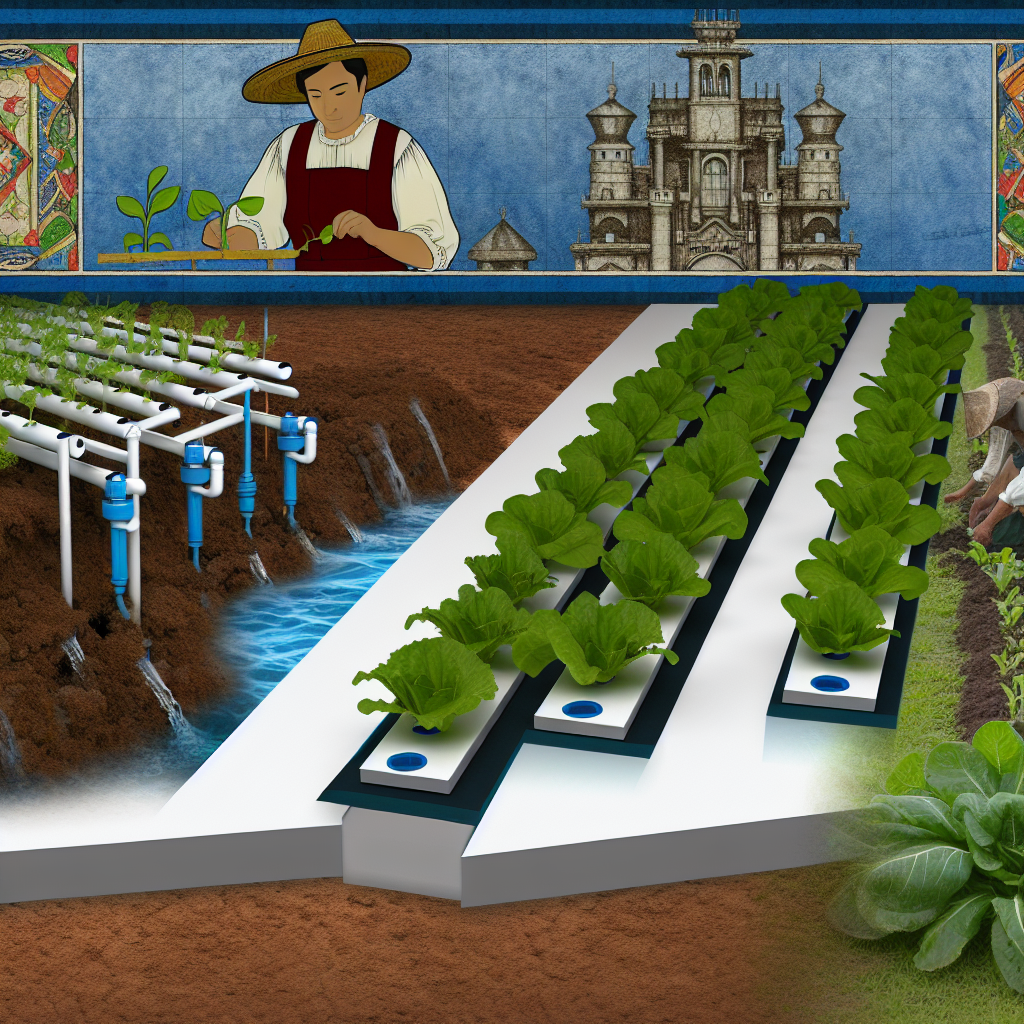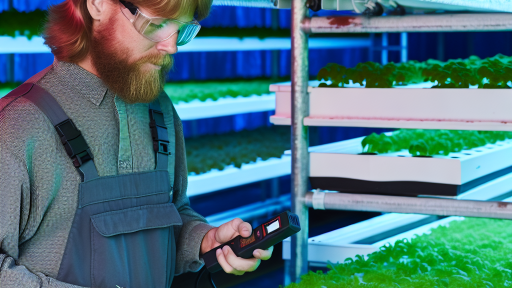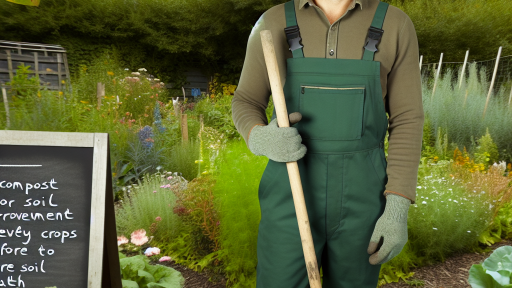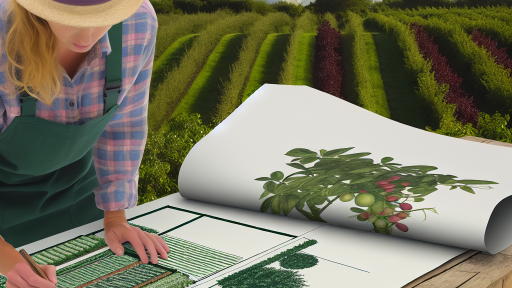Introduction to Hydroponics and Traditional Farming Methods
Hydroponics is an innovative agricultural practice.
It grows plants without soil, using nutrient-rich water instead.
This technique offers several advantages, including faster growth rates.
Additionally, it requires less water than traditional farming.
On the other hand, traditional farming heavily relies on soil.
It has been the cornerstone of agriculture for thousands of years.
In traditional methods, farmers cultivate crops in the ground.
They use various tools and techniques to enhance soil fertility.
Moreover, each farming method presents unique challenges.
Hydroponics can be costly to set up initially.
Conversely, traditional farming is susceptible to weather variability.
It faces issues such as pests and soil depletion over time.
Many farmers are exploring hydroponics as a sustainable alternative.
This shift promotes resource conservation and efficiency.
Hydroponics often allows for year-round production.
Transform Your Agribusiness
Unlock your farm's potential with expert advice tailored to your needs. Get actionable steps that drive real results.
Get StartedIt can be particularly advantageous in urban settings with limited space.
Furthermore, combining both methods may yield the best results.
Farmers can adapt their practices to local conditions and resources.
Evaluating the merits and drawbacks requires careful consideration.
Observing the needs of future food production is essential.
Overview of Hydroponics
Definition
Hydroponics is a method of growing plants without soil.
It substitutes soil with nutrient-rich solutions.
This technique promotes faster growth and greater yields.
Types of Hydroponic Systems
Several hydroponic systems support various growing needs.
Nutrient Film Technique (NFT) circulates a thin film of nutrient solution.
This method minimizes water usage while providing necessary nutrients.
Deep Water Culture (DWC) suspends plant roots in oxygenated nutrient solution.
This setup encourages rapid root growth and improved nutrient uptake.
Aeroponics involves misting the roots with nutrients, maximizing exposure to air.
It increases growth rates significantly compared to other hydroponic methods.
Hydroponic Techniques
Employing specific techniques can enhance hydroponic success.
Regular monitoring of pH levels ensures optimal nutrient absorption.
Utilizing grow lights replicates sunlight for indoor cultivation.
Moreover, employing a controlled environment reduces pest infestations.
Integrated pest management strategies help maintain plant health sustainably.
Overview of Traditional Farming
Definitions and Key Concepts
Traditional farming refers to the agricultural practices passed down through generations.
This approach relies heavily on manual labor and natural methods.
It includes crop cultivation, livestock rearing, and other artisanal techniques.
Overall, traditional farming emphasizes sustainability and ecological balance.
Showcase Your Farming Business
Publish your professional farming services profile on our blog for a one-time fee of $200 and reach a dedicated audience of farmers and agribusiness owners.
Publish Your ProfileCommon Techniques of Traditional Farming
Farmers often utilize organic fertilizers to enrich soil quality.
Crop rotation is a prevalent method that prevents soil depletion.
Intercropping is another strategy that maximizes land efficiency.
Additionally, farmers may employ contour plowing to reduce erosion.
Typical Practices in Traditional Farming
Many traditional farmers depend on local seed varieties for cultivation.
They often rely on rain-fed irrigation rather than mechanized systems.
Seasonal planting and harvesting align with climate patterns.
Moreover, community-based knowledge sharing enhances skills and innovation.
Challenges Faced by Traditional Farmers
Traditional farming faces numerous challenges in modern agriculture.
Climate change impacts weather patterns and crop yields.
Economic pressures often lead to reduced land availability.
Pests and diseases pose significant threats to traditional crops.
The Role of Technology in Traditional Farming
While rooted in tradition, some farmers adopt modern technologies.
These technologies include improved irrigation systems and pest management tools.
However, many farmers balance innovation with their traditional methods.
This blend helps preserve the integrity of traditional practices.
Gain More Insights: Best Soil Mixtures For Container Farming Success
Comparison of Environmental Impact: Hydroponics vs. Traditional Farming
Water Usage
Hydroponics significantly reduces water consumption.
It uses up to 90% less water than traditional farming.
This efficiency arises from a closed-loop system.
In contrast, traditional farming often leads to substantial water waste.
Soil erosion can further impact water retention.
Soil Health
Hydroponics eliminates the need for soil altogether.
This practice prevents soil degradation and compaction.
Consequently, plant diseases related to soil become less of a concern.
Conversely, traditional farming heavily depends on soil quality.
Over time, this can degrade the soil’s health.
Pesticide Use
Hydroponic systems tend to require fewer pesticides.
This is largely due to the controlled environments.
Plants receive targeted treatments, reducing chemical exposure.
In traditional farming, pesticide use remains prevalent.
This reliance can lead to pesticide resistance and environmental harm.
Carbon Footprint
Hydroponics has the potential for a lower carbon footprint.
Local production reduces transportation emissions.
Additionally, indoor systems can use renewable energy sources.
In traditional farming, larger equipment contributes to fossil fuel usage.
This complexity increases the overall carbon footprint.
Land Use Efficiency
Hydroponics maximizes food production per square foot.
This practice allows urban farming in limited spaces.
It also utilizes vertical farming techniques effectively.
Showcase Your Farming Business
Publish your professional farming services profile on our blog for a one-time fee of $200 and reach a dedicated audience of farmers and agribusiness owners.
Publish Your ProfileTraditional farming requires vast tracts of land.
As a result, it often leads to habitat destruction.
Overall Sustainability
Hydroponics demonstrates significant sustainability advantages.
It allows year-round production, irrespective of weather.
This model stabilizes food supply and prices.
On the other hand, traditional farming is subject to seasonal shifts.
Weather variability can jeopardize yields and food security.
Discover More: Organic Practices For Urban Gardeners
Economic Analysis: Cost, Profitability, and Market Trends
Overview of Hydroponic Costs
Hydroponic farming requires significant initial investment.
Startup costs include equipment, systems, and technology.
These systems often surpass traditional farming expenses.
However, operational costs can be lower in hydroponics.
Water and nutrient efficiency reduces long-term expenditures.
Profitability Comparisons
Hydroponic farms can yield higher profits per square foot.
This technique allows multiple cropping cycles annually.
Conversely, traditional farms depend on seasonal cycles.
Market demand drives profitability in both systems.
Hydroponic produce often fetches premium prices.
Market Trends in Agriculture
The demand for local and organic produce is on the rise.
Consumers increasingly prefer hydroponically grown products.
Environmental concerns enhance the appeal of this method.
Traditional farming still holds significant market share.
Both methods can coexist in a diverse agricultural landscape.
Challenges in Hydroponics
Hydroponic systems require technical knowledge for success.
Failures can result from system malfunctions or mismanagement.
Additionally, energy costs can impact profitability.
Despite these challenges, innovation is driving improvements.
Advancements in technology continuously enhance efficiency.
Future Outlook and Considerations
The future of hydroponics looks promising as technology evolves.
Investment in research and development can further reduce costs.
Moreover, climate adaptability positions hydroponics favorably.
As urbanization increases, demand for local solutions will grow.
Farmers must assess local needs to optimize operations.
Uncover the Details: Pollinator-Friendly Edible Landscapes
Nutritional Value
Understanding Nutritional Differences
Hydroponics and traditional farming produce unique nutritional profiles.
Factors such as growing conditions influence nutrient concentration.
Research shows hydroponically grown produce can have higher vitamin levels.
For example, lettuce and spinach grown in controlled environments thrive.
Conversely, traditional farming sometimes allows soil nutrients to enhance flavors.
Nutrient Availability
Hydroponic systems deliver nutrients directly to plant roots.
Showcase Your Farming Business
Publish your professional farming services profile on our blog for a one-time fee of $200 and reach a dedicated audience of farmers and agribusiness owners.
Publish Your ProfileThis method often leads to more efficient nutrient absorption.
Plants in traditional soil must extract nutrients, which can vary greatly.
Furthermore, nutrient levels in soil depend on management practices.
Comparison of Specific Nutrients
Several critical nutrients warrant comparison between the two methods.
- Vitamin C levels are typically higher in hydroponic spinach.
- Calcium content often shows greater variability in soil-grown crops.
- Hydroponically grown tomatoes may contain higher lycopene levels.
Consequently, it’s essential to evaluate produce from both methods.
Consumer Perception
Many consumers associate traditional farming with better-tasting food.
However, hydroponics provides consistent flavor and quality year-round.
As awareness grows, more people recognize the value of hydroponic nutrition.
Education about benefits plays a crucial role in consumer choices.
Uncover the Details: Sustainable Water Practices for Heritage Gardens

Challenges and Limitations of Hydroponics and Traditional Farming
Hydroponics: Challenges Faced
Hydroponics requires significant initial investment to set up.
The cost of technology and equipment can be high.
Additionally, ongoing maintenance adds to expenses.
System failures can lead to rapid crop loss.
This method is also vulnerable to power outages.
Limited knowledge among growers can hinder success.
Understanding nutrient management is essential.
Furthermore, hydroponic produces may face market resistance.
Traditional Farming: Constraints Experienced
Traditional farming struggles with environmental challenges.
Pests and diseases can devastate crops.
Farmers rely heavily on chemical pesticides.
This practice raises concerns about environmental pollution.
Moreover, traditional farming often faces water scarcity.
Climate change impacts crop yields significantly.
Soil degradation can reduce long-term productivity.
Lastly, market fluctuations can affect farmers’ profits.
Comparative Analysis of Resource Use
Hydroponics generally uses less water compared to traditional methods.
Efficient water recycling systems minimize waste.
Conversely, traditional farming often relies on extensive irrigation.
This could lead to depletion of local water resources.
Soil health is a vital concern for traditional agriculture.
Hydroponics, however, does not prioritize soil health.
This difference may impact sustainability in the long run.
Lessons Learned and Future Outlook
Both farming methods offer valuable insights into agricultural practices.
Hybrid systems may provide solutions combining strengths of each.
For instance, incorporating hydroponics in greenhouses can maximize yield.
Education and training are crucial for both systems’ success.
Investing in research can enhance farming practices overall.
Finally, understanding each method’s limitations fosters more sustainable solutions.
Future Trends in Farming: The Role of Hydroponics in Agriculture
Emerging Practices in Hydroponics
Hydroponics offers innovative techniques for growing crops without soil.
Showcase Your Farming Business
Publish your professional farming services profile on our blog for a one-time fee of $200 and reach a dedicated audience of farmers and agribusiness owners.
Publish Your ProfileThese methods utilize nutrient-rich water to support plant growth.
In urban areas, vertical hydroponics maximizes space efficiency.
Furthermore, this technique reduces water usage compared to traditional farming.
Technological Advancements
Recent advancements boost hydroponic efficiency and yield.
Automation technology streamlines planting and harvesting processes.
Additionally, sensors monitor nutrient levels and environmental conditions.
This real-time data allows for precise adjustments to water and nutrients.
Environmental Sustainability
Hydroponics significantly lowers the carbon footprint of food production.
It minimizes land usage, allowing for agricultural expansion in small spaces.
Moreover, this method reduces the need for pesticides and herbicides.
Consequently, it contributes to the health of surrounding ecosystems.
Consumer Trends and Preferences
Consumers increasingly prefer locally grown and fresh produce.
Hydroponics supplies fresh produce year-round regardless of climate.
This method supports organic farming practices widely desired by consumers.
Moreover, it enhances food security in densely populated areas.
Economic Considerations
Hydroponics can lead to higher profit margins for farmers.
Reduced resource costs and increased yield increase financial viability.
Moreover, this method creates new job opportunities in urban farming.
Investors are keen on supporting hydroponic ventures.
Future Outlook
The future of agriculture will heavily integrate hydroponics technologies.
This shift responds effectively to global population growth and urbanization.
Additionally, hydroponics aligns with sustainable development goals.
Hydroponics plays a critical role in evolving agricultural practices.
Which Method is Sustainable for the Future
Assessing Resource Use
Hydroponics utilizes significantly less water compared to traditional farming.
This method recycles water, minimizing waste and promoting conservation.
Additionally, hydroponics does not require soil, reducing land degradation risks.
On the other hand, traditional farming often leads to soil erosion.
This practice depletes nutrients over time, impacting long-term viability.
Impact on Food Production
Hydroponics can yield crops year-round, which increases food availability.
This approach allows for greater control over growing conditions.
Consequently, it can lead to fewer pesticide applications.
Traditional farming, while seasonally dependent, supports extensive crop diversity.
This diversity contributes to ecosystem resilience and stability.
Economic Considerations
Establishing a hydroponic system requires higher initial investment.
However, operational costs are often lower, leading to long-term savings.
Conversely, traditional farming methods are generally more cost-effective initially.
Yet, these methods may require more labor and resources over time.
Environmental Effects
Hydroponics significantly reduces the need for fertilizers and pesticides.
This leads to less chemical runoff, benefiting surrounding ecosystems.
In contrast, traditional farming often relies on chemical inputs.
Showcase Your Farming Business
Publish your professional farming services profile on our blog for a one-time fee of $200 and reach a dedicated audience of farmers and agribusiness owners.
Publish Your ProfileThis reliance can harm local waterways and biodiversity.
Community and Social Impact
Hydroponics can be implemented in urban areas, enhancing food accessibility.
This urban farming method fosters community engagement and education.
Traditional farming supports local economies through job creation in rural areas.
However, it may struggle with challenges like labor shortages and land costs.
Future Trends
As climate change escalates, innovative farming methods become essential.
Hydroponics presents a forward-thinking solution to food security challenges.
Nevertheless, traditional farming holds cultural significance and knowledge.
Both methods have roles in sustainable agriculture moving forward.
Combining their strengths could lead to more resilient food systems.
Additional Resources
Hydroponics: current trends in sustainable crop production – PMC
Vertical Farming – No Longer A Futuristic Concept : USDA ARS




